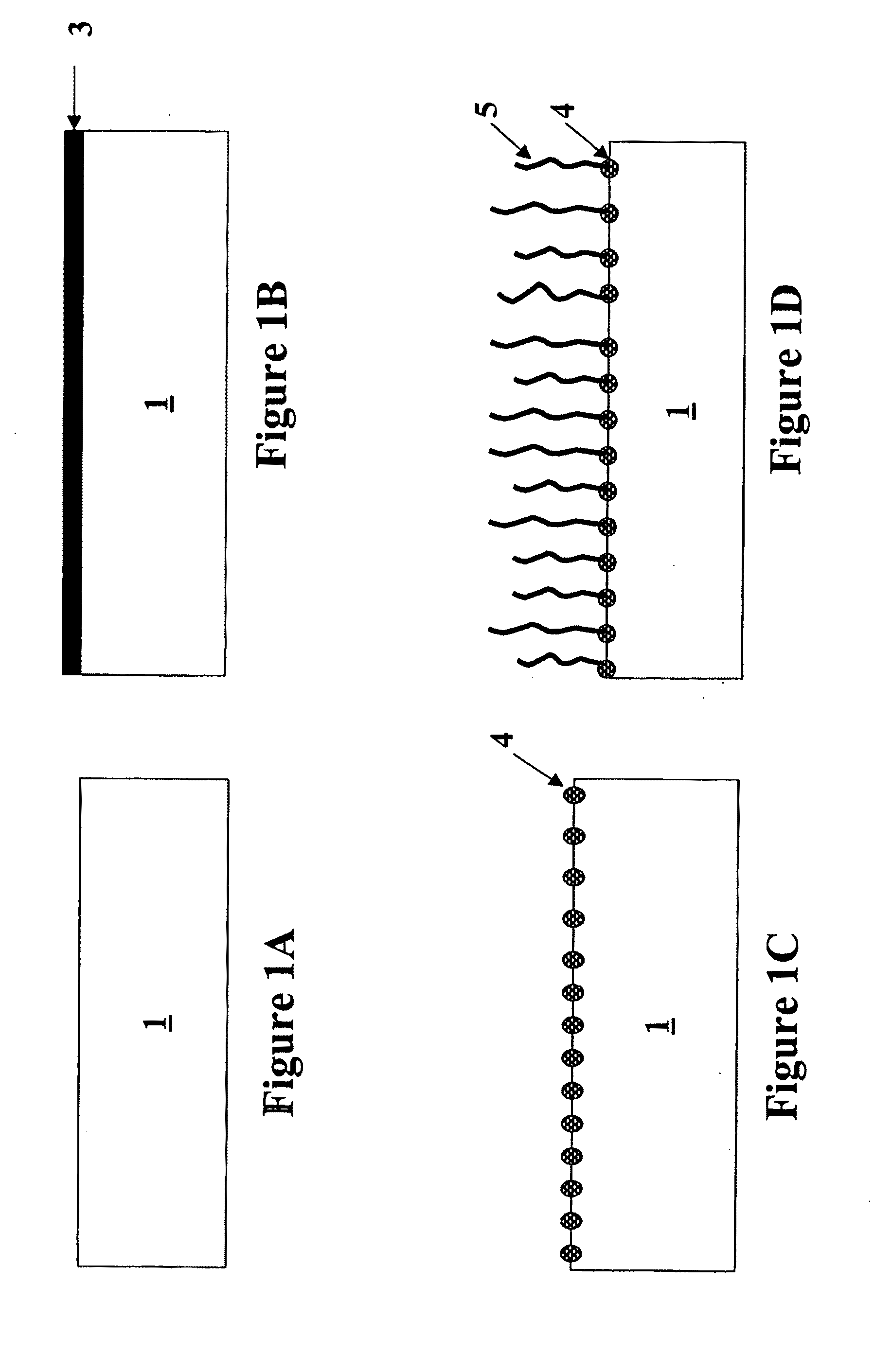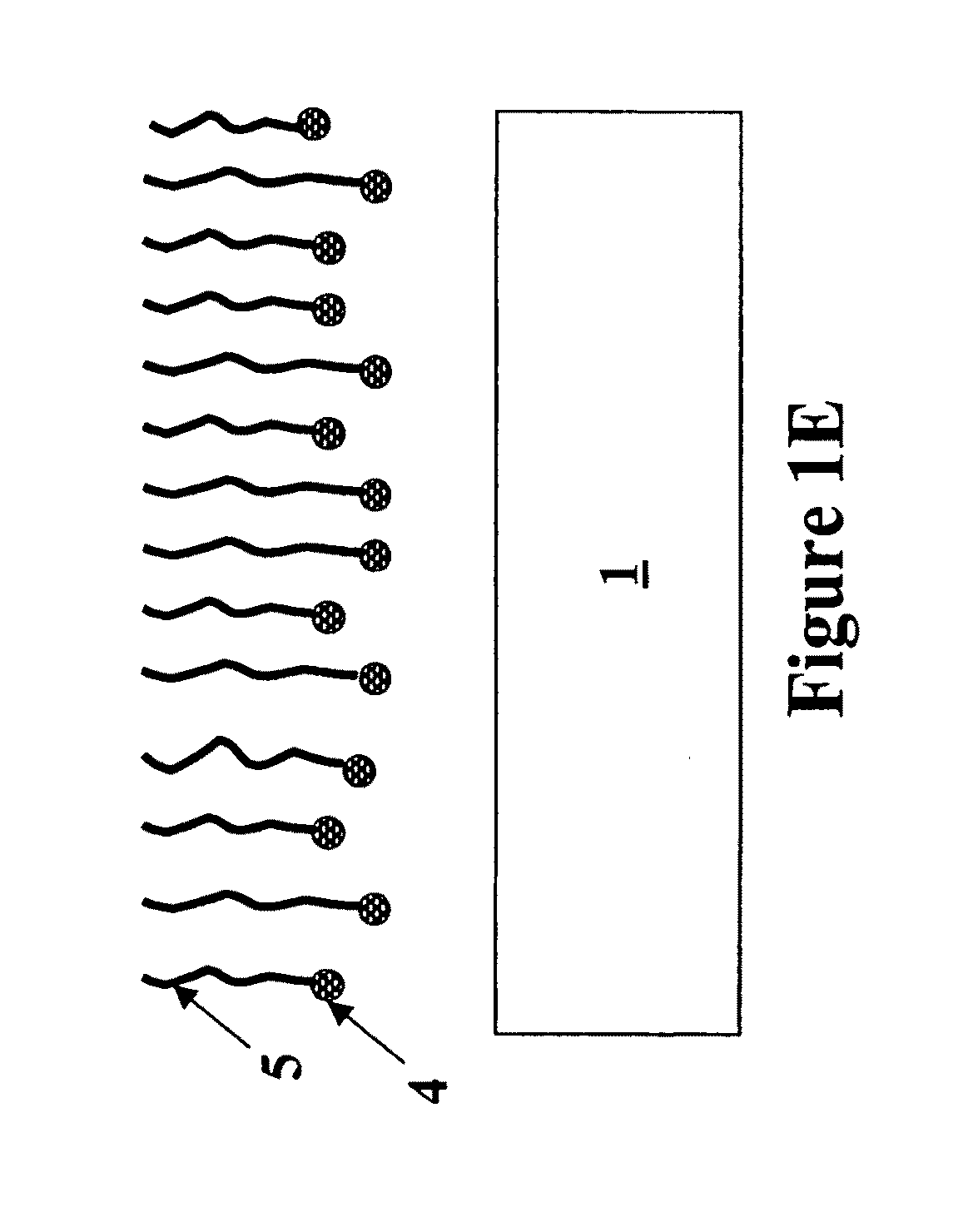Formation of metal-containing nano-particles for use as catalysts for carbon nanotube synthesis
a carbon nanotube and nanoparticle technology, applied in the field of carbon nanotube synthesis, can solve the problems of significant challenge to the realization of such applications, lack of understanding of cnt growth mechanisms, and the speed of cnt growth using iron silicide particles as catalysts, and achieve the effect of mass cnt growth
- Summary
- Abstract
- Description
- Claims
- Application Information
AI Technical Summary
Benefits of technology
Problems solved by technology
Method used
Image
Examples
example 1
Formation of Metal Nanoparticles Versus Formation of Metal-Silicide Nanoparticles on a Silicon Substrate
[0083]Two different substrates were evaluated. The first substrate is a pure Si (100) wafer, the second substrate is a Si (100) wafer with a 50 nm thermal oxide grown on it (in this disclosure referred to as SiO2 surface). Co. Ni or Fe metal films were deposited on said substrates (sputter process) to obtain a 1 nm and 5 nm thin metal film. These substrates comprising the metal films were then annealed in different gas ambients (N2, H2 or 50% N2 / 50% H2) at 600° C. After annealing (as described by the method of this invention) the continuous metal film is transformed into nanoparticles. The temperature of the annealing process to obtain metal-silicide particles turned out to be very important. FIG. 7 illustrates the optimal annealing temperatures for achieving metal-silicide nanoparticles on a Si-substrate for a 1 nm deposited Ni film, a 5 nm deposited Ni film, a 1 nm deposited Co ...
example 2
Comparison of Growth of CNT on Metal Nanoparticles Versus CNT Growth on Metal-Silicide Nanoparticles
[0088]Substrates as described in example 1, comprising metal nanoparticles or metal-silicide nanoparticles were exposed to CNT synthesis conditions comprising C2H4 as carbon source, N2 and H2 as assistant gases. Growth was performed at 600° C. The resulting CNTs were characterized by high-resolution microscopy. The findings of this study reveal that metal films such as Fe, Co and Ni films form nanoparticles that are catalytically active for CNT synthesis on both Si and SiO2 surfaces depending on the pretreatment and synthesis conditions. This implies that metal-silicide formation does not inhibit CNT growth as mentioned in prior art references but instead results in comparable CNT yield when the method for forming metal-silicide nanoparticles of the current invention is used. Overall, these results indicate that the considerable expertise already existing in metal silicides can be app...
example 3
Catalytic Activity of Metal-Silicide Nanoparticles Using a Diffusion Barrier Layer to Avoid Migration of Silicides into the Substrate
[0091]Metal-silicides formed on a silicon substrate can only be used as catalyst for CNT growth in a narrow process window since the temperature has to be limited to avoid growth inhibition. The decomposition temperature of the selected carbon source has to be lower that the growth temperature, otherwise the metal-silicide nanoparticles agglomerate or become embedded in the substrate before CNT growth occurs. It would mean that if Si is replaced by another substrate where agglomeration / diffusion of metal silicide nanoparticles is avoided, these compounds should be in principle active at higher temperatures.
[0092]To prove this assumption, a sample was prepared comprising metal-silicide nanoparticles which were formed on a barrier layer (SiO2). To achieve this, 5 nm of poly-Si, followed by 5 nm Ni were deposited onto 100 nm of thermal oxide (SiO2). The s...
PUM
| Property | Measurement | Unit |
|---|---|---|
| diameter | aaaaa | aaaaa |
| thickness | aaaaa | aaaaa |
| thickness | aaaaa | aaaaa |
Abstract
Description
Claims
Application Information
 Login to View More
Login to View More - R&D
- Intellectual Property
- Life Sciences
- Materials
- Tech Scout
- Unparalleled Data Quality
- Higher Quality Content
- 60% Fewer Hallucinations
Browse by: Latest US Patents, China's latest patents, Technical Efficacy Thesaurus, Application Domain, Technology Topic, Popular Technical Reports.
© 2025 PatSnap. All rights reserved.Legal|Privacy policy|Modern Slavery Act Transparency Statement|Sitemap|About US| Contact US: help@patsnap.com



